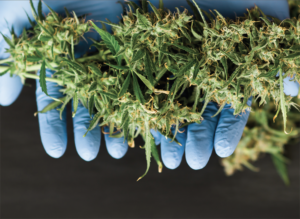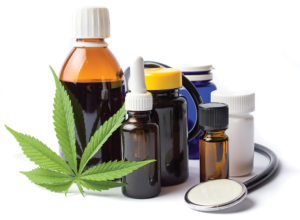Let’s Be Blunt: Cannabis Research Isn’t Where It Should Be

ACCORDING TO HISTORICAL ACCOUNTS and archeologists, cannabis has been used as medicine in China for over 5,000 years. Currently, thirty-three US states and the District of Columbia have legalized cannabis for medical use, and eleven states, as well as DC, have legalized recreational use. No deaths have been reported to date from a cannabis overdose. In comparison, an estimated 88,000 Americans die each year from alcohol-related causes with another 77,000 dying from opioid overdoses.
Even though six countries (Israel, the Netherlands, Spain, Canada, Uruguay, and the Czech Republic) are conducting pioneering medical research on the cannabis plant, the United States lags far behind in this regard. Despite the US Food and Drug Administration’s 2018 approval of Epidiolex for the treatment of select, severe forms of epilepsy (Epidiolex is a commercial form of cannabidiol, or CBD, which is a naturally occurring compound of the cannabis flower), and although the Drug Enforcement Administration announced last year that they intend to facilitate and expand scientific and medical research on marijuana, cannabis remains classified as a Schedule 1 drug. This ongoing classification of cannabis as a controlled substance means the plant continues to be viewed as an illicit and harmful drug, by some as on par with heroin or methamphetamine.
Hence, research on the medicinal benefits of cannabis has been very limited in the United States in terms of funding. Adie Rae, PhD, is the CEO of Smart Cannabis(TM), a technology and contract research organization working to identify quality craft cannabis and better understand its effects in humans. “I can only get money from the National Institutes of Health (NIH) if my research focuses on problems relating to the abuse of cannabis,” she says. In addition to classifying cannabis as a Schedule 1 drug, there’s an argument that labeling the plant with the more derogatory street name “marijuana” creates issues in terms of researching it from a social justice perspective. Currently, the majority of those incarcerated for cannabis-related infractions are people of color, including many individuals who were pioneers in the medical marijuana field.
Another barrier to sound research is lack of access to medicinal-grade cannabis. The vast majority of cannabis authorized for research comes from The Marijuana Project, an effort of the National Center for Natural Products Research (NCNPR) at the University of Mississippi’s School of Pharmacy. Some label the cannabis provided by the Marijuana Project “Mississippi ditch weed” due to its low potency and poor quality.
Cannabis Research to Date
A 2017 research paper published by the National Academies of Sciences, Engineering, and Medicine considered more than 10,000 scientific abstracts in order to ascertain the potential health benefits and risks of cannabis products. This report concluded that while cannabis cannot be considered a panacea or a miracle cure-all drug, the plant provides some very significant medicinal benefits.
In particular, the research focused on how the plant’s analgesic and neuroprotective properties can be effective in treating a number of medical conditions, including symptoms of neurological disorders such as epilepsy and multiple sclerosis. Cannabis has been shown to ease inflammation and alleviate pain, also reducing the nausea and vomiting associated with chemotherapy in cancer patients. Furthermore, cannabis appears to help in stabilizing one’s mood. In terms of risk, the report found evidence that using cannabis on a regular basis doesn’t carry the same risks as tobacco for developing lung or head and neck cancers.
People are finding genuine relief from a variety of ailments in these plants. That is a fact. Now what we need is more medical research into the plants, their compounds, and how they interact with the human body.
At present, however, there is no conclusive evidence as to the short- and long-term health effects of using cannabis in both adults and children, or how cannabis impacts a fetus when a mother consumes it during pregnancy or breathes in second-hand smoke. “Right now, we essentially have a huge market of what I would call an experimental drug,” Rae of Smart Cannabis observes. “We have absolutely no idea what the long-term consequences are, especially if one is taking high-potency cannabis frequently.” For most of human history, the cannabis that was widely used for medicinal purposes was of a relatively low potency, measured as the concentration of the psychoactive compound THC. However, the average potency in recent years has crept up to well above twenty percent.
 “Each of us goes into a cannabis experience with different brain chemistries,” says Brad Bogus, VP of growth and marketing at Confident Cannabis, a company started in 2015 by four Stanford Business School graduates to connect cannabis growers, sellers, and testing labs. “We have no idea what effect a given strain of cannabis will have on an individual, because we have almost no baseline data gathered during sound medical research.”
“Each of us goes into a cannabis experience with different brain chemistries,” says Brad Bogus, VP of growth and marketing at Confident Cannabis, a company started in 2015 by four Stanford Business School graduates to connect cannabis growers, sellers, and testing labs. “We have no idea what effect a given strain of cannabis will have on an individual, because we have almost no baseline data gathered during sound medical research.”
Daniel Luebke, chief marketing and financial officer at Seattle-based Heylo Cannabis, which processes extracts of the plant, points to its complexity:
We’re talking about thousands of active compounds that engage directly and indirectly with the human endocannabinoid system (ECS). So we have wide-ranging plant chemistry and wide-ranging human chemistry that makes it very challenging to research and predict specific effects. The best we can do is be transparent with chemistry and enable users to find the right solutions for their needs as easily as possible.
Indeed, research on the ECS, a complex cell-signaling system identified in the early 1990s, is very far behind in comparison to research into the nervous and digestive systems. However, preliminary research indicates the three core components of the ECS system (endocannabinoids, receptors, and enzymes) may be involved in regulating fertility, appetite, pain sensation, mood, memory, and other processes.
Clinical Trial Challenges
Zoe Sigman is program director for Project CBD, a California-based nonprofit established in 2010 by journalists who were covering the rise of medical marijuana. The project is dedicated to promoting and publicizing research into the medical uses of cannabidiol and other components of the cannabis plant. Unfortunately, Sigman says, the bulk of the research into cannabis is preclinical in nature. Emma Chasen, co-founder of industry-focused Eminent Consulting, concurs. “Currently, most of the cannabis research we have comes from animal studies. While the ECS is similar in humans and mice, the way they function is different. Therefore, studies that elucidate a certain mechanism of action with cannabis compounds in mice may not produce the same results when replicated in humans.” Sigman adds that the reluctance of doctors to prescribe cannabis can be understandable given the lack of regulations in the natural supplement industry. “In order for them to really accept that cannabis is an effective therapy for any specific illness, they’ll want to do clinical trials.”
At the same time, Sigman notes the proclivity of pharmaceutical companies to fix their clinical trials by showing a benefit that doesn’t exist and downplaying side effects. Given that a clinical trial can run $10 million or more, cost remains an obstacle for those working at the grassroots level who have been offering cannabis remedies for decades.
For example, Trista Okel, founder and CEO of Empower BodyCare, points to the difficulty getting quality research conducted on cannabis-infused topical products produced by a small company. When she inquired at a local research hospital about conducting a study on one of their products, she learned that a ten-person study would cost around $250,000. “Studies are really cost-prohibitive unless the company is well funded,” she says. Okel also notes that researchers like to study isolated molecules. “So when a product like a topical formulation has a number of different ingredients that all work together, it makes it difficult for the researchers to identify what is working in the formulation and come to conclusions unless each ingredient is studied separately.”
Plant-Based Medicine vs. Big Pharma
Some politicians advocate for de-scheduling cannabis to a Schedule II substance. This move would treat cannabis as akin to a pharmaceutical drug. According to Chasen, this approach doesn’t take full advantage of the plant’s complex properties. “Cannabis works best when a diverse array of its compounds are present in the medicinal product. Big pharma generally manufacturers isolates, meaning they isolate one compound, synthesize it, and then send it out to medicate the masses.” She expresses concerns about big pharma entering the cannabis market.
They will produce medicine that’s not actually medicine at all. It won’t have much therapeutic action and may even cause more harm than good. Whole-plant, full-spectrum cannabis products have the greatest therapeutic potential and the lowest risk.
Jeremy Plumb of Pruf Cultivar (a producer of a range of cannabis products), a man dubbed the “Wizard of Weed” by Wired magazine, points to how the grassroots medicinal cannabis movement has now evolved to a scale where those who have been working in this field for decades now have an opportunity to take it to the next level. “By taking a humane perspective, we can bring together the decades of people growing in their backyards and learn from them as we unleash academic resources to fully study this plant in depth.”
Nathan Howard, co-founder of East Fork Cultivars, agrees:
What we’re seeing across the United States and beyond is a resurgence of plant-based medicine. Whether the plant is cannabis or psilocybin-producing mushrooms, people are finding genuine relief from a variety of ailments from these plants. That is a fact. Now what we need is more medical research into these plants, their compounds, and how they interact with the human body. Cannabis research in particular is unfortunately decades behind where it should be.
On the other hand, psilocybin, the compound produced in “magic mushrooms,” has been researched with funding from the federal government for over five decades. As Howard attests, “We have verified research showing that psilocybin can and does help with depression, smoking [cessation], and end-of-life anxiety.”
The question remains why medical research can be conducted on one natural plant but not the other, as well as why the federal government continues to approve pills that can kill in lieu of plants that have been shown to heal.
